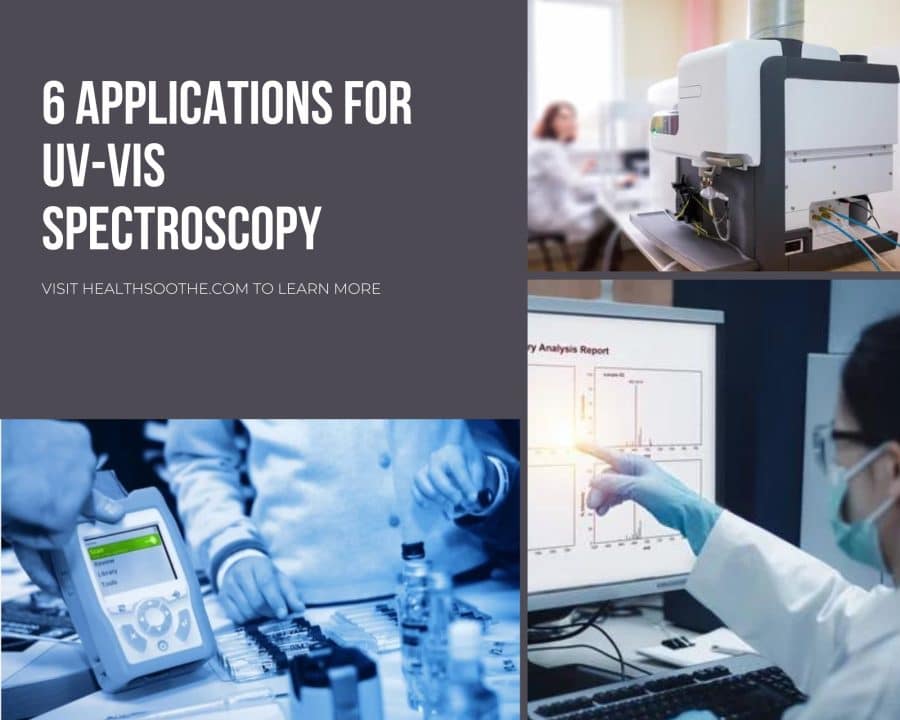UV-Vis spectroscopy is an analytical method that compares a sample to a reference sample to determine how much distinct wavelengths of visible or ultraviolet light are absorbed or transmitted. This technique is widely known in the fields of science because it provides a simple and fast technique for qualitative and quantitative estimations covering many application areas.
Due to expert discoveries and technological advancements, the field of UV-Vis spectroscopy will continue to grow. Along with this ongoing evolution is the growing need for more certified accessories and instruments to provide you with the best solution for your personal experience.
Agilent UV VIS spectroscopy instruments guarantee that their accessories and supplies will keep pace with these advancements.
UV-Visible Spectrophotometer
A UV-Vis spectrophotometer is the device used in UV-Vis spectroscopy. By manipulating the analysis of light wavelength and its pathway, this instrument can estimate the concentration of particular molecules in a microvolume. UV-Vis spectrophotometers are widely used in nearly every laboratory because of their measurement versatility, affordable price, and easy application.
1. Color measurement
By measuring the visible light reflected from a surface or transmitted through a sample or solution, UV-Vis can determine the color of a solid or liquid substance. UV-Vis technology can color match or quantify a shift in color of the sample or solution, which is frequently thought of as a quality measure for color.
Without performing a visual inspection, UV-Vis is commonly used to determine whether a reaction has started or is still ongoing. You must first determine the object's spectral reflectance to conduct color measurements with a UV-VIS spectrophotometer.
The color is expressed as a numeric value by estimates based on the illumination's absorption spectra, the object's measured spectral reflectance and the color-matching feature.
2. Bacterial cultivation
Bacterial growth, including that of E. coli, can be monitored using a UV-Vis spectrophotometer, which assesses a fluid's optical opaqueness at a given wavelength.
The number of bacteria and their growth rate can be determined by passing light of a specific wavelength through a suspension of bacteria in broth culture, particularly 600 nm, for assessment of cell concentration and growth monitoring.
3. Food and beverage analysis
An analytical method that is frequently used in the food and beverage sector is UV-Vis spectroscopy. Food and beverage researchers can use this technique to learn various details about their products. This includes the beverage's color, the amount of glucose in the substance, purity, or if it has been tampered with.
Generally, the most important analytical tool for testing food quality without affecting the natural properties of the food ingredients is a UV-Vis spectrophotometer.
4. Analysis of reaction kinetics
To comprehend how these reactions take place, analysis of reaction kinetics is a fundamental chemical and biochemical methodology. For this analysis, UV-Vis spectrophotometry is frequently used when product transition can be tracked over time by absorption or transmittance at a particular wavelength.
A single wavelength is monitored by single-point kinetics, and a range of wavelengths is monitored by scanning kinetics. Also, you can use rapid-mix or stopped-flow accessories or instruments to measure the rate of reaction of two rapidly reacting solutions.
5. DNA and RNA analysis
Although many techniques can be used to count the nucleic acids, UV-Vis absorbance is the most common way to gauge the quantity and quality of DNA or RNA.
UV light is strongly absorbed by DNA, both single-stranded and double-stranded, with a maximum absorbance wavelength of 260 nm. However, other substances of interest besides DNA can absorb light in the infrared spectrum, such as RNA and the aromatic amino acids of different proteins; both can absorb light between 260 and 280 nm.
Samples may contain a variety of pollutants that could increase UV absorbance because it is hard to ensure total sample purity.
6. Pharmacological evaluation
The advancement of pharmaceutical formulations, measurement of impurities, evaluation for dissolution, and measurement of proteins and nucleic acids in pharmaceutics all use the analytical technique of UV-Visible spectroscopy.
In addition to detecting impurities, UV spectrophotometers can measure the visible portions of ultraviolet light. They can be a useful tool for determining the concentrations of active ingredients in compounds. A highly accurate method of quantifying these levels is spectrophotometric analysis, which measures the absorption of UV radiation of light.
Other Applications of UV Vis Spectroscopy
UV-Vis spectroscopy is a widely used methodology because it is reasonably priced and easy to use in a variety of real-world and theoretical applications, such as:
- The quantity of absorbed hemoglobin
- Air quality monitoring
- Battery composition determination
- HPLC detector
- Research into enzymatic processes
- Analysis of smaller nanoparticles
UV-Vis spectroscopy is also significantly helpful in some more highly specialized research. In fact, there are a lot of uses for this technique that go on forever.
References:
https://www.smacgigworld.com/blog/applications-uv-vis-spectroscopy.php
https://lab-training.com/applications-of-uv-vis-spectroscopy/

